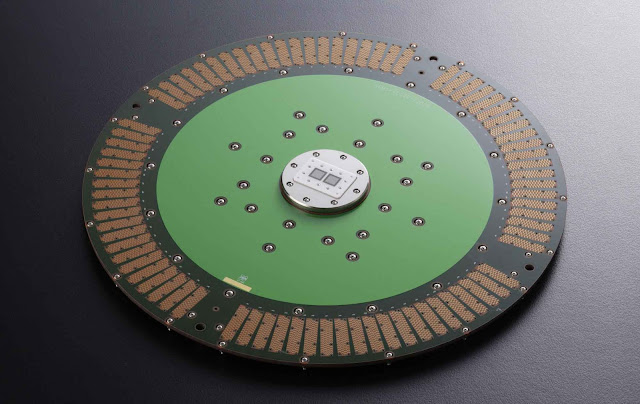In the ever-evolving realm of semiconductor manufacturing, probe cards play a crucial role in ensuring the quality and reliability of electronic devices. These small, yet intricate components bridge the gap between the semiconductor wafer and testing equipment, facilitating the evaluation of individual components on the wafer. However, the design of probe cards is not only influenced by technological advancements but is also deeply intertwined with environmental factors. The profound impact of environmental considerations on Probe CardDesign examines the strategies employed in California to address these challenges.
Understanding The Environmental Factors at Play:
1.
Temperature Extremes
In the world of semiconductor manufacturing, temperature is
a critical factor that can significantly affect the performance and reliability
of electronic components. Extreme temperatures, whether hot or cold, can lead
to thermal expansion or contraction, potentially causing misalignments and
stress on probe cards. In California, where diverse climates are the norm,
probe card designers must navigate the challenges posed by temperature
extremes.
Addressing Thermal Challenges in California:
California-based semiconductor companies invest heavily in materials and
designs that can withstand a wide range of temperatures. Innovative cooling
solutions, advanced materials with low coefficients of thermal expansion, and
precision engineering are key elements in creating probe cards capable of
performing reliably under the varying climatic conditions of the state.
2.
Humidity and Moisture
Humidity and moisture are adversaries to the delicate
electronic components of a probe card. Excessive moisture can lead to
corrosion, affecting the electrical connections and reducing the overall
lifespan of the probe card. California's coastal areas, in particular, present
a unique challenge due to higher humidity levels.
Californian Approach to Moisture Challenges: To combat the
impact of humidity, probe card designers in California leverage advanced
coatings and encapsulation techniques that provide a barrier against moisture.
These protective measures not only shield the probe cards from environmental
elements but also enhance their durability and reliability, ensuring consistent
performance over time.
3.
Air Quality and Contaminants
Airborne contaminants, such as dust and pollutants, pose a
constant threat to the precision of semiconductor manufacturing equipment,
including probe cards. California, with its diverse landscapes and industrial
activities, contends with air quality challenges that demand innovative
solutions.
Protecting Probe Cards from Contaminants: Probe card
designers in California incorporate rigorous contamination control measures
into their designs. Cleanroom environments, advanced filtration systems, and
sealed designs are employed to minimize the impact of airborne particles. This
proactive approach not only safeguards the probe cards but also contributes to
the overall quality of semiconductor manufacturing in the region.
Innovation in Californian Probe Card Design:
·
Material Selection and Engineering
Choosing the right materials is paramount in developing
probe cards that can withstand environmental challenges. Californian companies
invest in materials with high resistance to temperature fluctuations,
corrosion, and environmental contaminants. Materials like advanced ceramics and
alloys are preferred for their robustness and stability under varying
conditions.
Precision Engineering for Reliability: Precision engineering
is a cornerstone of Californian probe card design. Companies in the region
prioritize tight tolerances, ensuring that probe cards can maintain their
accuracy and reliability even in the face of environmental stressors. This
attention to detail sets the stage for semiconductor manufacturing processes
that meet the stringent quality standards of the industry.
·
Environmental Testing and Validation
To ensure the resilience of probe cards, extensive
environmental testing is conducted. Californian semiconductor companies subject
their probe cards to simulated environmental conditions, replicating the
challenges posed by temperature variations, humidity, and contaminants. This
rigorous testing phase allows designers to identify potential weaknesses and
refine their designs for optimal performance.
Continuous Improvement through Feedback Californian
companies embrace a culture of continuous improvement. Feedback from real-world
applications and testing scenarios is incorporated into the design process,
enabling iterative enhancements that result in probe cards capable of thriving
in California's dynamic environmental conditions.
Regulatory Compliance and Sustainable Practices:
California has been a pioneer in implementing stringent
environmental regulations. From air quality standards to waste management, the
state has set high benchmarks for industries to uphold. Probe card designers in
California must navigate this regulatory landscape, ensuring that their
manufacturing processes adhere to the state's environmental guidelines.
Sustainable Practices in Probe Card Manufacturing: In
response to environmental concerns, Californian companies are increasingly
adopting sustainable practices in probe card manufacturing. This includes the
use of eco-friendly materials, energy-efficient processes, and waste reduction
initiatives. By aligning with California's commitment to environmental
sustainability, these companies contribute to the state's overall environmental
goals.

